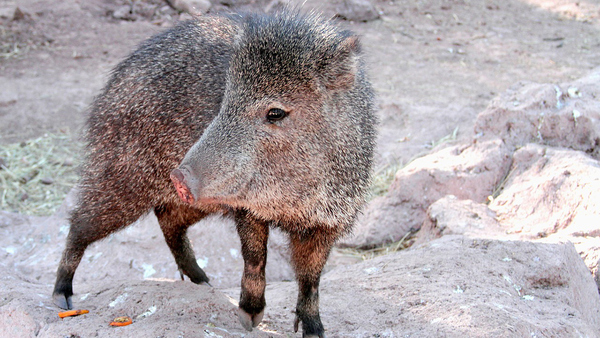
For most of the Southwest, “dry” is a normal state of affairs. We live in a complex mosaic of arid, semi-arid, and seasonally arid zones that make most generalizations impossible. And an especially wet or dry season can throw all calculations off, making our usual watering routines irrelevant. We must be willing to adjust to ensure plant health in our gardens.
That said, there are some things we can all do to maximize the natural precipitation that we do get. Much has been written about water harvesting. Water management can be as elaborate as you like: rainwater storage tanks, gray-water systems with tanks and pumps connected to irrigation, complicated irrigation-zone installations. All of these options, however, are dependent on available skill and budgets. But we can all start somewhere, so the following are some basics of water conservation that anyone can strive for. Even small changes help!

Choose plants wisely
There are hundreds of great plants that have low water requirements. Succulents, natives, and adaptable plants from other arid and Mediterranean parts of the world can all create amazing garden combinations. If you have any doubts, visit some of the great botanic gardens scattered throughout the Southwest for ideas.

Create smart plant groupings and placements
Plan your gardens so that plants with similar water requirements live together. Ideally, keep any plants with higher water needs near the house to take advantage of roof runoff, or rainwater directed by downspouts. Use more drought-tolerant plants farther out where frequent care and watering are not as likely.

Maximize existing contours
Watching a long-awaited rainfall run quickly away from your thirsty plants is so disappointing! With a little modification of your garden’s contours, you can create minor landforms that direct the water where you need it, slowing it down enough so that it soaks steadily into your soil. Even shallow collection basins can capture several inches of water. Creating an artful series of mounds and basins will add interest to a garden and prevent precious water from running down the street.

Use hardscape to your advantage
Garden paths and permeable dry streambeds built on a deep base of coarse gravel will capture water and allow rain to soak deeply into adjacent root zones. Patios of dry-laid stone with porous gaps perform the same way. Outdoor showers (using enviro-safe soaps) send water directly into adjacent plantings. As all rock gardeners know, rocks and boulders direct water deeply along their sides, and the reduced soil surface area helps retain that deep moisture.

Create curb cuts
A curb cut removes part of the street curb to allow water to fill a collection basin near the street, nourishing a street-side tree or landscape. Cities such as Tucson, Arizona, have a vested interest in reducing runoff from storms and creating “greener” tree-lined streetscapes that help cool the neighborhoods, while also returning rainwater to the water table and reducing the need for irrigating street trees. Check your local area to see if such programs are in place there; if they are not, encourage implementation through your local entities. There is great satisfaction in watching fresh rainwater pool at the base of your thirsty trees and soaking deeply into their root zones.

Plant smart containers
Traditional outdoor container plantings are usually pretty thirsty, with annuals that need daily watering. If that’s your style, be sure to use saucers under them so no water runs away and plants have extra time to fully use the water you give them. Better yet, use succulent plants to create colorful sculptural works of art that need much less water. In cool seasons these can go for weeks without water, and in summer, once or twice a week is plenty to keep them happy. Taking a short vacation is no problem—they will be there to greet you when you return.
We can always do more to save our most valuable natural resource. We know the occasional wet seasons will pass and we will be faced with water challenges again, so any changes we make now will only enhance our gardening success in the future.
Learn more:
Dan Johnson lives and gardens in Denver and in Tucson, Arizona. He is an associate director of horticulture for the Denver Botanic Gardens.
Photos: Dan Johnson






















Comments
Log in or create an account to post a comment.
Sign up Log in